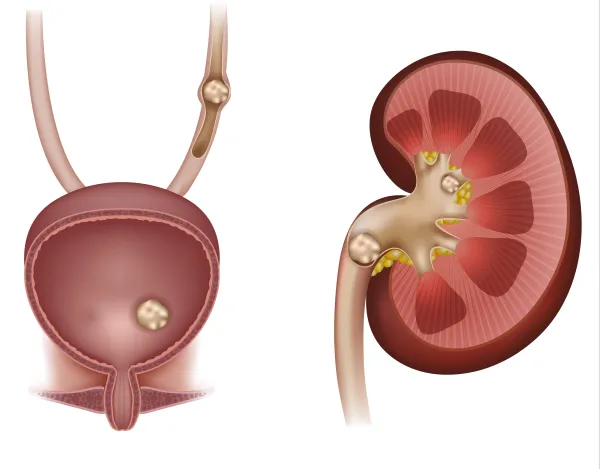ICD 10 Coding Alert
Here Are Some Changes You Need to Know
Remember: These updates go into effect Oct. 1.
This year’s ICD-10-CM updates include approximately 500 new codes, and 30ish codes that have been revised or converted to parent codes.
Regardless of your coding specialty, there are a lot of code changes to peruse and digest. Take a peek at the following to glean some information on the updates, including the codes and a brief analysis of each.
Find New Options for Epilepsy, Migraines
There’s a new epilepsy designation.
New Codes
- G40.C (Lafora progressive myoclonus epilepsy)
- G40.C0 (Lafora progressive myoclonus epilepsy, not intractable)
- G40.C01 (Lafora progressive myoclonus epilepsy, not intractable, with status epilepticus)
- G40.C09 (Lafora progressive myoclonus epilepsy, not intractable, without status epilepticus)
- G40.C1 (Lafora progressive myoclonus epilepsy, intractable)
- G40.C11 (Lafora progressive myoclonus epilepsy, intractable, with status epilepticus)
- G40.C19 (Lafora progressive myoclonus epilepsy, intractable, without status epilepticus)

Analysis: These additions provide another layer to the G40.- (Epilepsy and recurrent seizures) code group, which is already considerable. It represents a type of epilepsy that didn’t previously have specific codes; and these codes account for intractable/not intractable and with/without status epilepticus.
For those unfamiliar with the condition, Lafora progressive myoclonus epilepsy is a type of epilepsy characterized by seizures and progressive neurological deterioration. It is a rare genetic disorder that usually begins in adolescence and is caused by mutations in certain genes. The seizures in Lafora progressive myoclonus epilepsy are often myoclonic, which means they involve sudden, brief muscle jerks. Other symptoms may include cognitive decline, difficulty with coordination and balance, and visual hallucinations.
New Codes
- G43.E (Chronic migraine with aura)
- G43.E0 (Chronic migraine with aura, not intractable)
- G43.E01 (Chronic migraine with aura, not intractable, with status migrainosus)
- G43.E09 (Chronic migraine with aura, not intractable, without status migrainosus)
- G43.E1 (Chronic migraine with aura, intractable)
- G43.E11 (Chronic migraine with aura, intractable, with status migrainosus)
- G43.E19 (Chronic migraine with aura, intractable, without status migrainosus)
Analysis: Much like the new epilepsy codes, the new migraine codes add another layer to the already deep field of G43.- (Migraine) codes. Before 2024, chronic migraine with aura did not have its own code set. In 2024, you’ll be able to code for chronic migraine with aura, and you can further specify that diagnosis by answering the intractable/not intractable and status migrainosus questions.
Remember, chronic migraine is a condition characterized by the presence of a headache on 15 or more days per month for at least three months, with at least eight of those headaches being migraines.
Also, migraine with aura refers to a set of neurological symptoms that some individuals experience before or during a migraine. These symptoms typically occur gradually and can last for a few minutes to an hour. Migraine aura can manifest as various sensory disturbances, such as visual changes (flashing lights, blind spots, zigzag lines), tingling or numbness in the face or limbs, difficulty speaking, or even temporary loss of vision.
New Codes
- H57.8A (Foreign body sensation eye (ocular))
- H57.8A1 (Foreign body sensation, right eye)
- H57.8A2 (Foreign body sensation, left eye)
- H57.8A3 (Foreign body sensation, bilateral eyes)
- H57.8A9 (Foreign body sensation, unspecified eye)
Analysis: These codes will be added to the H57.8- (Other specified disorders of eye and adnexa) code set, and will allow for greater specificity when a patient feels like they have a foreign body (FB) in their eye but don’t.
New Codes
- J44.8 (Other specified chronic obstructive pulmonary disease)
- J44.81 (Bronchiolitis obliterans and bronchiolitis obliterans syndrome)
- J44.89 (Other specified chronic obstructive pulmonary disease)
Analysis: These codes are part of the J44.- (Other chronic obstructive pulmonary disease) code set, and will allow for more specific reporting of “other” chronic obstructive pulmonary disease (COPD). Previously, you’d have had to rely on J44.9 (Chronic obstructive pulmonary disease, unspecified) for all the above diagnoses.

New Codes
- M80.0B- (Age-related osteoporosis with current pathological fracture, pelvis)
- M80.0B1- (Age-related osteoporosis with current pathological fracture, right pelvis)
- M80.0B2- (Age-related osteoporosis with current pathological fracture, left pelvis)
- M80.0B9- (Age-related osteoporosis with current pathological fracture, unspecified pelvis)
- M80.8B- (Other osteoporosis with current pathological fracture, pelvis)
- M80.8B1- (Other osteoporosis with current pathological fracture, right pelvis)
- M80.8B2- (Other osteoporosis with current pathological fracture, left pelvis)
- M80.8B9- (Other osteoporosis with current pathological fracture, unspecified pelvis)
Analysis: These codes add further anatomical specificity to the pathological fracture ICD-10-CM codes. Previously, there was no way to specify that the fracture was to the patient’s pelvis.
Definition: Remember, a pathological fracture is a type of fracture that occurs in a bone that has been weakened by an underlying disease or condition. It is different from a typical fracture that occurs due to trauma or injury. In a pathological fracture, the bone breaks more easily because it has been compromised by an existing condition, such as osteoporosis or a tumor.
7th character alert: When these codes require you to code all the way to the 7th character, you’ll choose from these options:
- A = initial encounter for fracture
- D = subsequent encounter for fracture with routine healing
- G = subsequent encounter for fracture with delayed healing
- K = subsequent encounter for fracture with nonunion
- P = subsequent encounter for fracture with malunion
- S = sequela
New Codes
- R09.A (Foreign body sensation of the circulatory and respiratory system)
- R09.A0 (Foreign body sensation, unspecified)
- R09.A1 (Foreign body sensation, nose)
- R09.A2 (Foreign body sensation, throat)
- R09.A9 (Foreign body sensation, other site)
Analysis: ICD-10-CM will place these codes in the R09.- (Other symptoms and signs involving the circulatory and respiratory system) code set, providing greater specificity when a patient feels there is an FB in the listed areas, but there is none present.
New Codes
- T56.82- (Toxic effect of gadolinium)
- T56.821- (Toxic effect of gadolinium, accidental (unintentional))
- T56.822- (Toxic effect of gadolinium, intentional self-harm)
- T56.823- (Toxic effect of gadolinium, assault)
- T56.824- (Toxic effect of gadolinium, undetermined)
Analysis: These codes reside in Chapter 19: “Injury, Poisoning, and Certain Other Consequences of External Causes.” More specifically, they will be part of the T56.8- (Toxic effects of other metals) code set.
Definition: Gadolinium is a rare earth metal that is commonly used in medical imaging procedures, specifically in magnetic resonance imaging (MRI). Gadolinium-based contrast agents (GBCAs) are injected into the patient’s bloodstream to enhance the visibility of certain tissues or blood vessels during an MRI scan. These contrast agents contain gadolinium ions that interact with the magnetic field of the MRI machine, producing a clearer and more detailed image.
Related Articles
ICD 10 Coding Alert
- ICD-10 Coding Updates:
Here Are Some Changes You Need to Know
Remember: These updates go into effect Oct. 1. This year’s ICD-10-CM updates include approximately 500 [...] - Cardiology Focus:
Beware Code Changes to These Common Cardiac Conditions
The countdown is on until the code updates go into effect. Don’t dither on learning [...] - Specialty Focus:
Rely on the Guidelines for Top-Notch Oncology Coding
Don’t get lost in the Dx weeds: Code the reason for the encounter first. The [...] - You Be the Coder:
Nail Down Tonsillectomy Specifics
Question: An 11-year-old patient undergoes primary tonsillectomy due to acute recurrent tonsillitis caused by Haemophilus [...] - Reader Questions:
Define ‘Cauda Equina’
Question: What is the proper diagnosis code for cauda equina, and how does this condition [...] - Reader Questions:
Learn Which Conditions Are ‘External’ for Epileptic Seizures
Question: The ED physician treated a patient with alcohol-related epileptic seizures. The seizures were not [...] - Reader Questions:
Count Lack of Funds for Rx As SDoH
Question: During a recent follow-up appointment with an established patient, the patient explained they didn’t [...]




